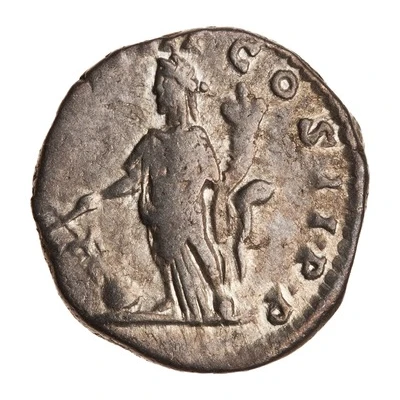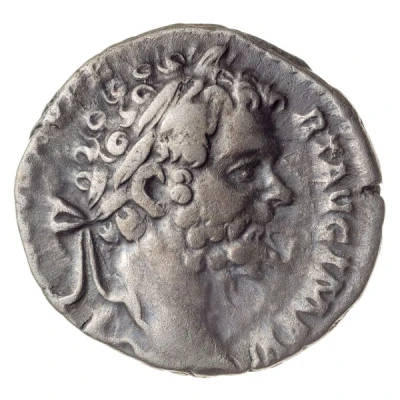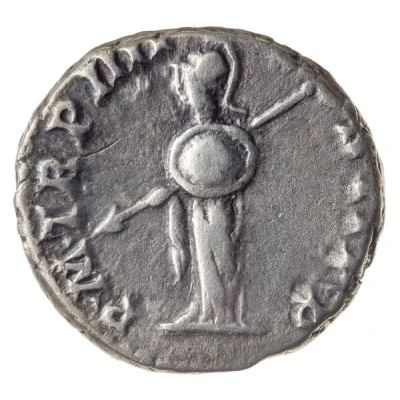Denarius - Septimius Severus P M TR P IIII COS II P P; Mars
| Silver | - | - |
| Issuer | Rome › Roman Empire (27 BC - 395 AD) |
|---|---|
| Emperor | Septimius Severus (Lucius Septimius Severus) (193-211) |
| Type | Standard circulation coin |
| Years | 195-196 |
| Value | 1 Denarius |
| Currency | Denarius, Reform of Augustus (27 BC – AD 215) |
| Composition | Silver |
| Shape | Round (irregular) |
| Technique | Hammered |
| Demonetized | Yes |
| Updated | 2024-10-05 |
| Numista | N#269118 |
|---|---|
| Rarity index | 100% |
Reverse
Mars, helmeted, naked except for cloak tied round waist, advancing right, holding transverse spear in right hand and trophy over left shoulder in left hand.
Script: Latin
Lettering: P M TR P IIII COS II P P
Translation:
Pontifex Maximus, Tribunicia Potestate Quarta, Consul Secundum, Pater Patriae.
High priest, holder of tribunician power for the fourth time, consul for the second time, father of the nation.
Comment
Source:Online Coins of the Roman Empire (OCRE)
Interesting fact
The Denarius coin featuring Septimius Severus (P M TR P IIII COS II P P; Mars) was minted during a time of significant political and military turmoil in the Roman Empire. Septimius Severus was the first Roman Emperor to be born in Africa, and he ruled the empire during a period of relative stability, known as the "Severan Dynasty." However, his reign was marked by several conflicts, including wars against the Parthian Empire and the Germanic tribes. Despite these challenges, Severus was able to maintain the empire's territorial integrity and implement several important reforms, including the creation of a professional civil service and the establishment of a uniform system of laws throughout the empire. The coin itself is made of silver and features an image of Mars, the Roman god of war, on the reverse side. This suggests that the coin may have been minted to commemorate Severus' military victories or to promote his image as a strong and powerful leader. Overall, the coin provides a fascinating glimpse into the political and cultural landscape of the Roman Empire during the late 2nd century AD.



